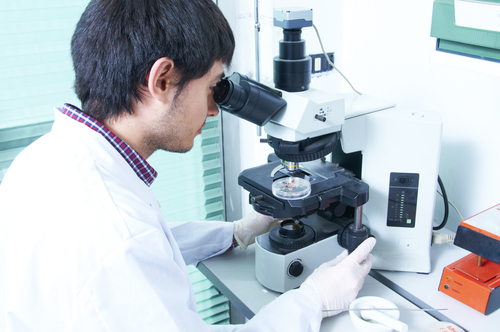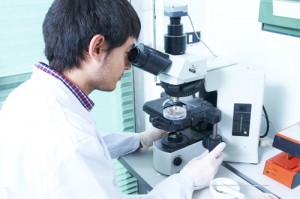New Overview Underscores Recent Progress in PAH Treatments

 To date, twelve therapies have been approved to treat pulmonary arterial hypertension (PAH). Of these, three were approved last year, indicating significant progress in understanding and treating PAH. These advancements were greatly needed, as according to the recent publication of “Pulmonary Arterial Hypertension: Progress and Challenges in the Modern Treatment Era,” a new treatment overview published in AJMC for the chronic, progressive disease that affects two out of every one million individuals each year.
To date, twelve therapies have been approved to treat pulmonary arterial hypertension (PAH). Of these, three were approved last year, indicating significant progress in understanding and treating PAH. These advancements were greatly needed, as according to the recent publication of “Pulmonary Arterial Hypertension: Progress and Challenges in the Modern Treatment Era,” a new treatment overview published in AJMC for the chronic, progressive disease that affects two out of every one million individuals each year.
A variety of individuals are affected by PAH. Mostly commonly, people with connective tissue disease, such as scleroderma, and congenital heart disease have PAH, but the condition can often be overlooked. Symptoms tend to be general and nonspecific, including shortness of breath, fatigue, and weakness. As a consequence, late diagnosis plagues patients, as it is usually better to achieve an early diagnosis in order to take steps to improve health and prevent disease progression.
[adrotate group=”4″]
For patients who do receive a diagnosis, a small selection of treatments can be prescribed to improve symptoms. Traditional treatments have included calcium channel blockers, diuretics, and anticoagulants. However, the last twenty years produced a number of products specific to PAH, beginning with intravenous Flolan (epoprostenol sodium) in 1995. During one clinical trial, Flolan was shown to increase survival in patients with severe idiopathic PAH.
More recently, macitentan, riociguat, and treprostinil were approved in 2013. These agents target cell signaling pathways known to play a role in PAH, which include the prostacyclin pathway, the endothelin pathway, and the nitric oxide pathway. All were shown to increase patient survival during clinical trials.
Despite these successes, more research must constantly be conducted as twists and turns in the understanding of PAH are numerous. For example, the common six minute walking distance (6MWD) metric used to evaluate efficacy of PAH-specific treatments may not be useful in patients with less severe disease. In one clinical study, 6MWD could explain only 22% of disease progression in patients.
Regardless of any setbacks, progress is growing with regard to understanding how treatments work mechanistically and how to deliver treatments. If the coming years are just as prosperous as the previous ones in terms of PAH drug development, patients with PAH will have better prognoses and enjoy increased quality of life.
Current PAH Clinical Trials
While the three recent approvals for PAH therapies are indeed encouraging, drug research and development continues to move forward in the area of Pulmonary Arterial Hypertension treatment. At present, clinical trials.gov indicates that there are 391 open clinical trials with PAH as the indicated disease, and 110 that have completed enrollment and are in their active stages. Among the active clinical trials are several that continue to make headlines in the PH community, such as the “Long-term Extension Study of the SERAPHIN Study, to Assess the Safety and Tolerability of ACT 064992 in Patients With Symptomatic Pulmonary Arterial Hypertension (SERAPHIN OL).” Sponsored by Actelion, this extension study for ACT 064992 is part of the SERAPHIN study that Pulmonary Hypertension News has covered several times in the past year, which has focused on testing the company’s novel dual endothelin receptor antagonist (ERA) Macitentan in PAH patients. The current extension study for SERAPHIN began in July of 2008 and is expected to complete in November of this year. Its main endpoint is to determine the safety and tolerability of ACT-064992 in 550 patients who have symptomatic pulmonary arterial hypertension. Secondary endpoints will determine various adverse events relating to the use of Macitentan as a treatment, as well as adverse events associated with stopping treatment prematurely.
Another promising PAH-related clinical trial is being conducted by Bellerophon Pulse Technologies on the use of “Inhaled Nitric Oxide/INOpulse DS for Pulmonary Arterial Hypertension (PAH).” Back in June of 2014, Pulmonary Hypertension News reported on how the company had completed enrollment in two key phase 2 clinical trials related to study of its lead therapeutic INOpulse for patients with pulmonary hypertension, as well as for pulmonary hypertension patients with chronic obstructive pulmonary disease (COPD). In the first study for PAH patients, INOpulse is being tested in three different doses in order to determine if the use of inhaled nitric oxide, together with the company’s special delivery device, called INOpulse® DS, is both safe and effective in treating PAH. Early clinical trials by Bellerophon have already suggested both safety and efficacy, and this new study, which is expected to complete in December of 2014 in collecting data for its primary endpoint, will seek to present additional data that demonstrates a change in pulmonary vascular resistance (PVR) (dynes. sec/cm-5) from baseline to EOS Part 1.
A third PAH-related clinical trial that is still in its recruitment phase is from Reata Pharmaceuticals, who are testing their lead product as a potential breakthrough therapy. Known as the “LARIAT” trial, “Bardoxolone Methyl Evaluation in Patients With Pulmonary Arterial Hypertension (PAH)” is seeking to enroll 112 PAH patients nationwide in a dose-ranging study that will determine the safety and efficacy of Bardoxolone Methyl. Pulmonary Hypertension News has profiled Bardoxolone Methyl as a potential PAH therapy in the past, with Contributing Editor Dr. Ana de Barros demonstrating how treating inflammation in PAH using Antioxidant Inflammation Modulators like Reata’s lead therapeutic could offer substantial therapeutic value for those with the disease. In her article, she also interviewed Dr. Harrison W. Farber, M.D. Professor of Medicine and Director of the Pulmonary Hypertension Center at Boston University’s Boston Medical Center and key investigator for the LARIAT trial, who believes that “If Bardoxolone works in PAH without untoward effects on the immune system, then potentially it will be disease changing and not another vasodilator,” meaning that it could treat the underlying cause of the disease and not just the symptoms.
[adrotate group=”3″]
New PAH Combination Therapy Shown To Be Safe, Efficacious
Most recently, a new combination therapy involving two FDA-approved therapies were found to be highly effective in treating patients with Pulmonary Arterial Hypertension. Last month, Pulmonary Hypertension News reported that Combining Gilead’s Ambrisentan and Tadalafil in PAH Clinical Trial Reduced Risk of Clinical Failure, with data from the “AMBITION” study revealing that the use of Ambrisentan — known as “Letairis” by its brand name, and Tadalafil, otherwise known as “Cialis” — reduced hospitalizations and first clinical failure event by 50%, when compared to the use of these drugs as mono therapies. The discovery of this new combination therapy is a key advancement for those with the disease, since it reduces serious episodes caused by the progression of PAH.
In spite of the fact that Pulmonary Arterial Hypertension is considered a rare disease, its highly progressive characteristics and alarmingly high rate of morbidity combined with limited therapeutic options present unmet needs in the treatment of PAH patients. However, the recent trend over the past three years of newly-approved therapies, as well as experimental PAH drugs currently in the clinical pipeline, suggest that the trajectory toward managing the disease and improving outcomes for patients remains on the rise.







